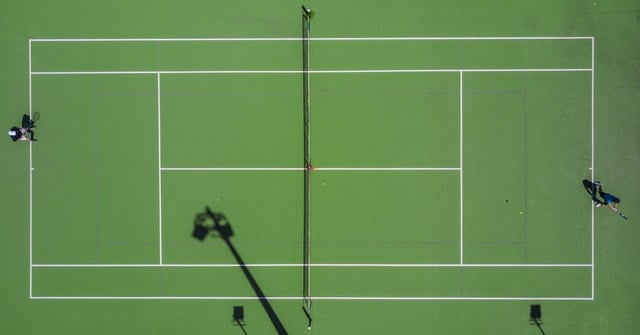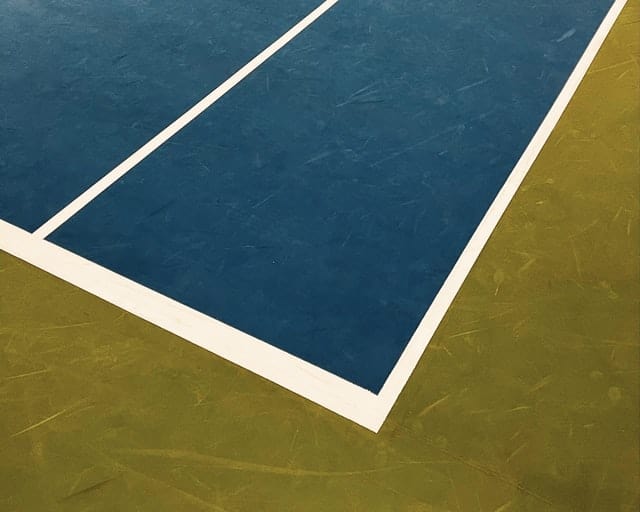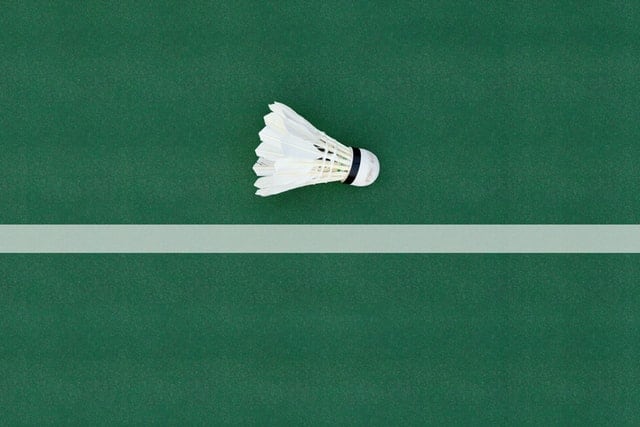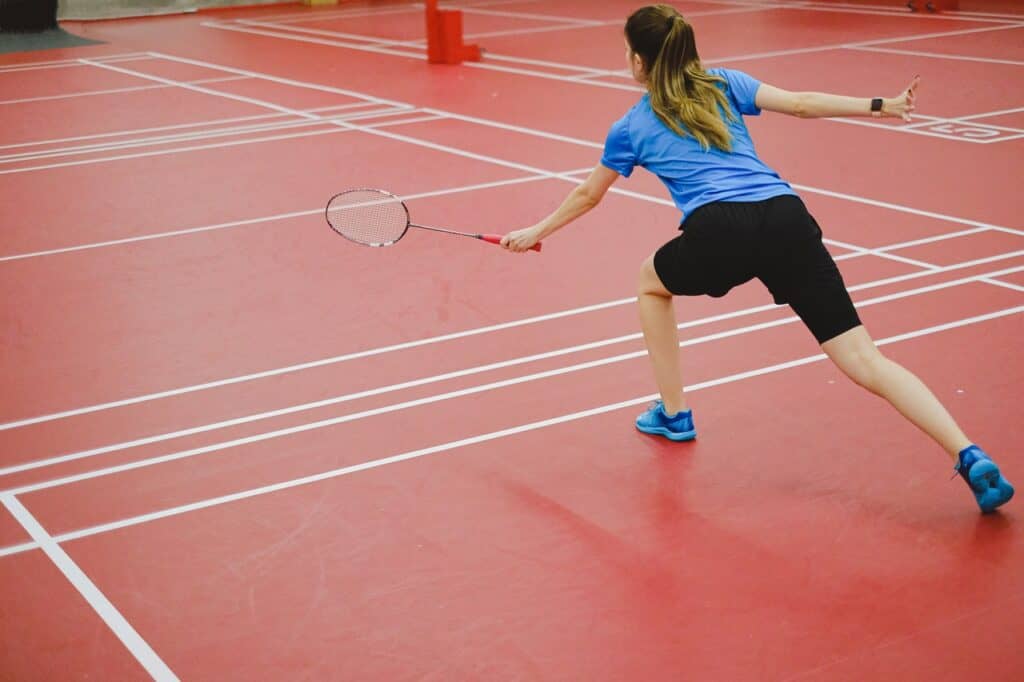The court dimensions for badminton are almost universal and can be used at all levels – professional, collegiate, and high school.

The Badminton World Federation (BWF), which is the governing body for the sport of badminton and is recognized by the International Olympic Committee (IOC) as the world governing body for badminton, usually mandates the court dimension rules and regulations.
A badminton court is a rectangle divided into two sides for two-player badminton.
Outer line
A badminton court measures 44 feet (13.41 meters) in length and 20 feet in width (6.1 m) These are the outermost lines of a badminton court; we can figure out how much space a badminton court will take by looking at them.

A badminton court is 81.801 square meters in size, but some space should be left around it so that the players’ rackets do not hit anything outside the court.
More than 1 m should be left on both sides (vertical line), while 1.5 m should be left on both bottom sides (horizontal line) (horizontal line).
The sidelines
After the outer line, we’ll look at the sideline measurements. There should be 1.5 feet (46 cm) between the outer and inner lines, as shown in the picture.
These sidelines are drawn for singles play; any shuttle landing outside of these lines is not valid in singles; additionally, these lines (vertical to 44 feet line) are considered IN both during service and rally in doubles.
The service line is drawn horizontally to the net on both sides of the court, and any shuttle in singles or doubles that lands before this line is considered OUT.

Back service line
The back service line doubles after the sideline, with a space of 2.5 feet (76 cm) between both lines.
These horizontal lines to the 20-foot lines are drawn for double service, which means that any shuttle landing outside of this line during service is OUT in doubles.
Front service line
Let’s look at the front service line measurement after the back service line for doubles. The distance between the net and the front service line is 6.5 feet (1.98 m).
Mid service line
Both the sides of the court are divided into two halves, with a distance of 8.5 feet (2.59 m) between them excluding the sidelines.
The total distance between the two halves is 17 feet. Because badminton is played diagonally, both court sides are divided in half.
Single side line
We talked about the breath of those two halves in the previous phase, but now the half-court is 13 feet long (3.96m).
Understanding the service court
Inside the court, the service courts are smaller box shapes. We’ll look at what they’re used for later, but first, let’s make sure we have the right boxes.

The centerline is a line that runs through the middle of the badminton court, from the back to near the net. The centerline is met by another line at the front of the court; this is the front service line. When these two lines meet, they form a T shape.
A singles service court consists of four lines:
- The centre line
- A singles side line (inside side line)
- The front service line
- The back line (the outside one, all the way at the back)
You have two service courts on your side of the net: your right service court and your left service court. The same can be said for your adversary.
The service courts for doubles are slightly different. They are wider because the outside sideline is used (remember that the doubles court is wider), and they are shorter because the inside backline is used.
That is the sole purpose of the inside backline: doubles service. Because that’s all it does, it’s probably the most perplexing line on a badminton court.
To be clear, a doubles service court is comprised of the following four lines:
- The centre line
- A doubles side line (outside side line)
- The front service line
- The inside back line (not the very back line, but the next one in)
What are some other interesting facts about badminton court lines?
Now that we’ve gone over the answer in detail, let’s look at some other interesting facts about badminton lines.
What are some other interesting facts about badminton court lines?
Now that we’ve gone over the basics of lines in detail, let’s look at some other interesting facts about badminton lines.
The width of the lines must be 40 millimetres.
Rule 1.1 of the Laws of Badminton stipulates that a badminton court’s lines must be 40 millimeters wide.
The 40 millimeters are also included in the total distance in the measurements shown in the image below. As an example, you can see that the doubles sideline is 0.46 meters away from the singles sideline. That is, the distance between the end of the singles line and the start of the doubles line is 0.42 meters, and the line thickness is 0.04 meters (or 40 millimeters) until the end of the court.
As a result, the line is always counted within the dimension it is defining for these measurements, following the logic of the rules.
The court lines should be easily distinguishable and preferably white or yellow in colour.
The color of the lines is another intriguing rule. If you’ve ever watched badminton on TV, you’ve probably noticed that the court is always green and the lines are always white. This is the preferred configuration. Because the lines are white, they stand out against the green court.
If, on the other hand, the lines are drawn in a Sports Hall where other sports are also played, the most important feature is that they are easily distinguishable from all other lines, so the color will be determined by what is already present.